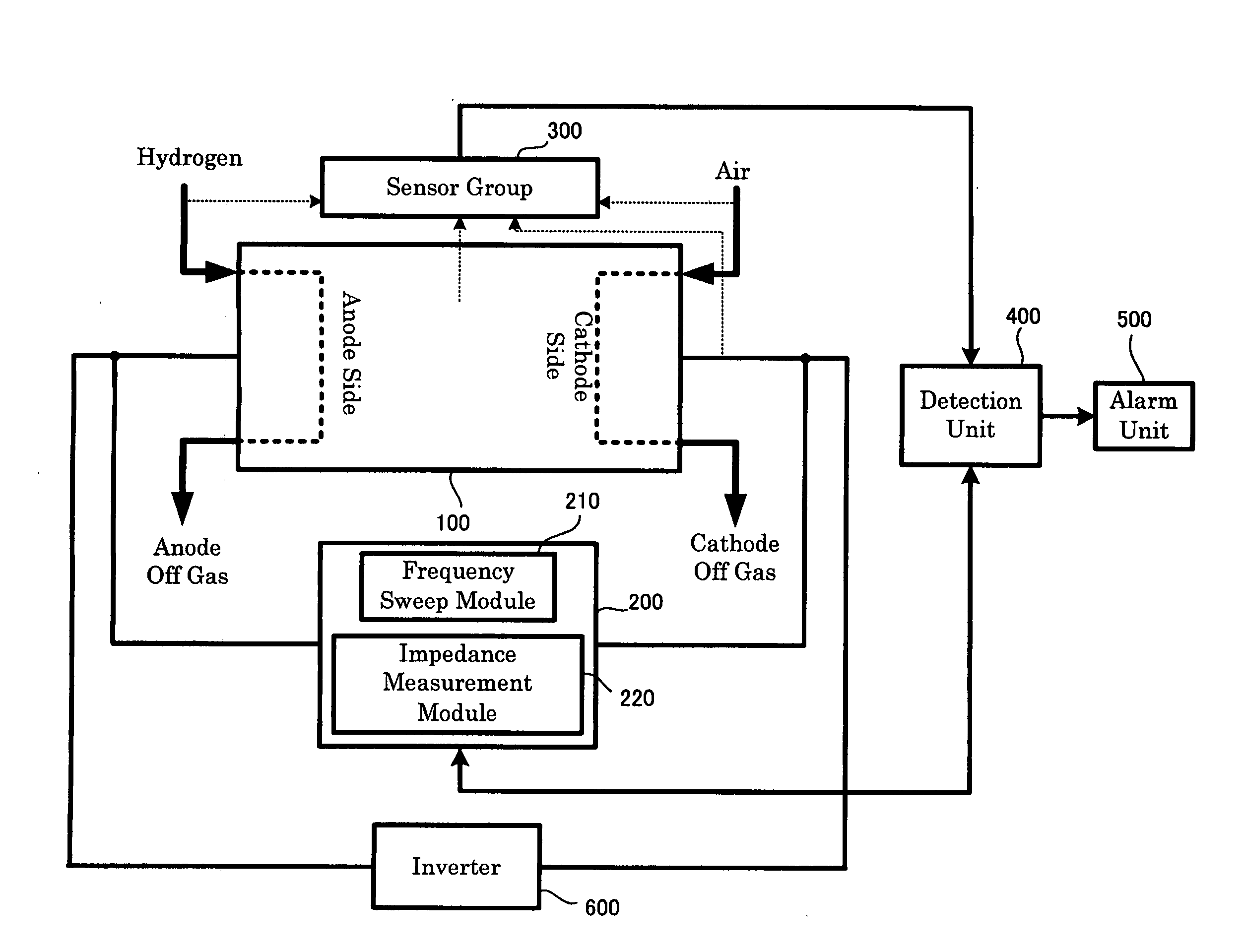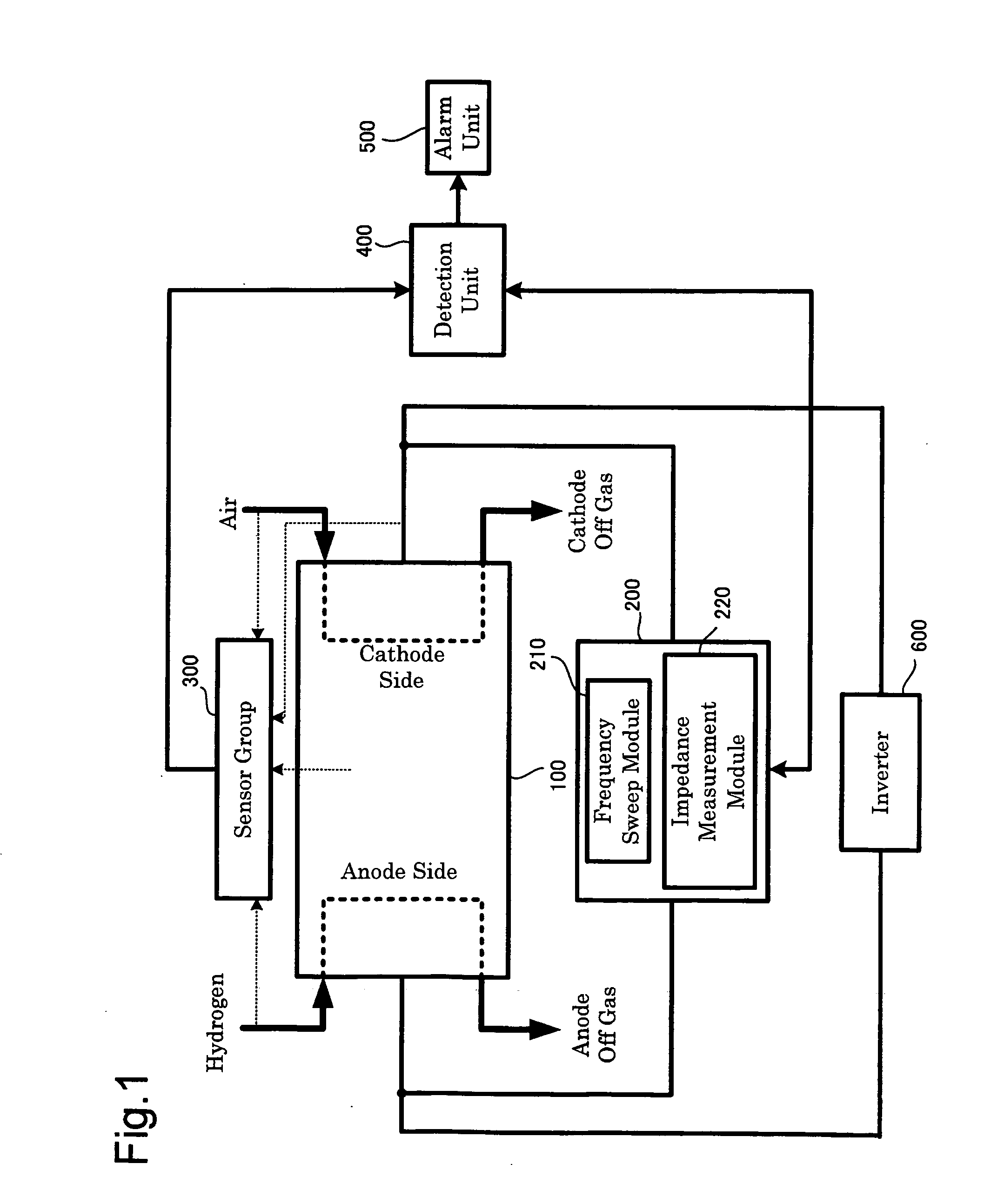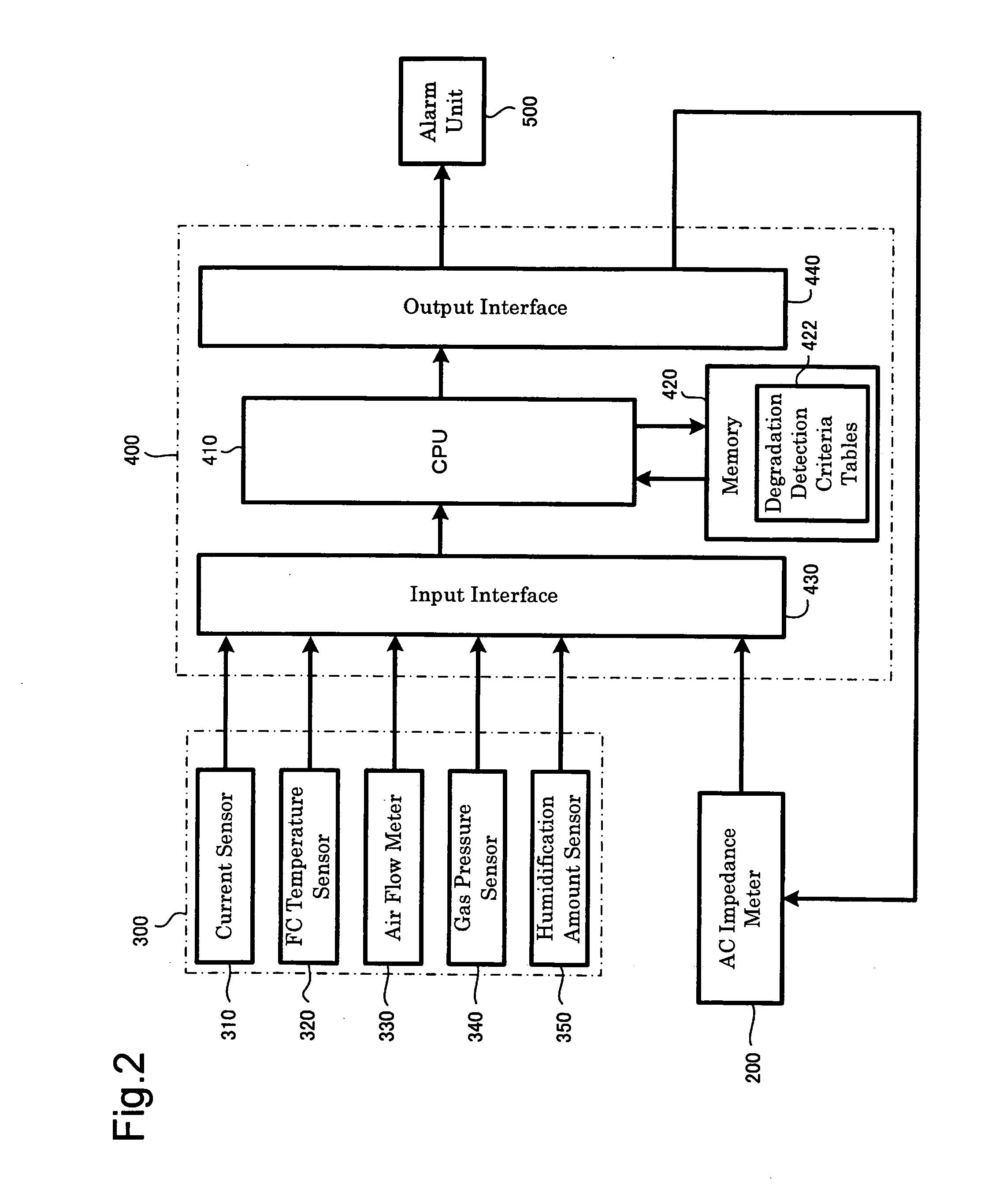Performance Degradation Analyzer and Method of the Same
a technology of performance degradation and analyzer, which is applied in the direction of electrochemical generators, instruments, material electrochemical variables, etc., can solve the problems of significant variation in ac impedance, difficulty in identification, and abnormality in the fuel cell or the fuel cell stack
- Summary
- Abstract
- Description
- Claims
- Application Information
AI Technical Summary
Benefits of technology
Problems solved by technology
Method used
Image
Examples
modified example 1
H-1. Modified Example 1
[0121]The procedure of the embodiment detects performance degradation based on each of the ohmic resistance Rohm, the reaction resistance Ract, and the diffusion resistance Rgas constituting the internal resistance Rin of the fuel cells 100. One possible modification may detect performance degradation based on the internal resistance Rin as the sum of the ohmic resistance Rohm, the reaction resistance Ract, and the diffusion resistance Rgas.
[0122]A degradation reference value is determined in advance for each combination of the FC temperature, the humidification amount, the pressure, the power generation current, and the air flow rate. Multiple determined degradation reference values with these five parameters as keys are stored as a five-dimensional degradation detection criteria table 422 in the memory 420. The performance degradation detection is then performed according to a routine of performance degradation detection shown in FIG. 14.
[0123]FIG. 14 is a f...
modified example 2
H-2. Modified Example 2
[0128]In the embodiment described above, the performance degradation detection based on the ohmic resistance Rohm uses the FC temperature and the humidification amount as the two parameters representing the operating conditions of the fuel cells 100. The performance degradation detection based on the reaction resistance Ract uses the FC temperature, the pressure, and the power generation current as the three parameters representing the operating conditions of the fuel cells 100. The performance degradation detection based on the diffusion resistance Rgas uses the air flow rate, the humidification amount, and the power generation current as the three parameters representing the operating conditions of the fuel cells 100. In the modified example 1 described above, the performance degradation detection based on the internal resistance Rin uses the FC temperature, the humidification amount, the pressure, the power generation current, and the air flow rate as the f...
modified example 3
H-3. Modified Example 3
[0129]In the embodiment described above, the fuel cells mounted on the vehicle are the target of performance degradation detection. This is, however, not restrictive but the technique of the invention is applicable to detect performance degradation in various other types of fuel cells, for example, stationary fuel cells or portable fuel cells.
PUM
 Login to View More
Login to View More Abstract
Description
Claims
Application Information
 Login to View More
Login to View More - R&D
- Intellectual Property
- Life Sciences
- Materials
- Tech Scout
- Unparalleled Data Quality
- Higher Quality Content
- 60% Fewer Hallucinations
Browse by: Latest US Patents, China's latest patents, Technical Efficacy Thesaurus, Application Domain, Technology Topic, Popular Technical Reports.
© 2025 PatSnap. All rights reserved.Legal|Privacy policy|Modern Slavery Act Transparency Statement|Sitemap|About US| Contact US: help@patsnap.com



